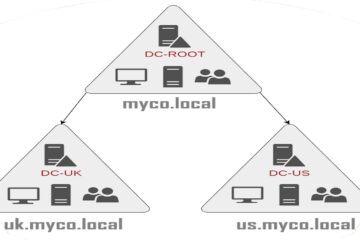Robotic systems refer to an assembly of interlinked components and software designed to perform tasks with a certain level of autonomy, often replicating or surpassing human capability in precision, endurance, or speed. These systems can be programmed to carry out a series of complex actions automatically, often leveraging sensors and algorithms to interact with their environment. Robotic systems can range from simple automated machines to complex humanoid robots and autonomous vehicles.
Importance of Robotic Systems in Today’s World
In today’s technologically advanced era, robotic systems play a significant role across numerous sectors. They enhance productivity in industries by performing tasks at high speed and accuracy, with minimal errors compared to human labor. In healthcare, robotic systems facilitate surgeries and patient care, increasing precision and reducing risks. They also play a critical role in exploration, from deep-sea to outer space, reaching places human beings can’t, and providing us with invaluable data. Beyond these, robots aid in domestic chores, logistics, and even in fields like education and entertainment.
Actuators are pivotal components in robotic systems. They are devices that convert energy, often electrical, into physical motion. They serve as the “muscles” of a robot, allowing them to interact with the physical world. In other words, if sensors are the eyes and ears providing the robot with information about its environment, actuators are the hands and feet that let the robot take action in response to that information. The precision, speed, and type of actuator used can significantly influence a robot’s capabilities.
Introduction of the Top 5 Robotic Systems
There are myriad robotic systems presently in use, each with unique characteristics and applications. However, for the purpose of this discussion, we will focus on five key systems that have a profound impact on various facets of life and industry. These include Industrial Robots, Autonomous Vehicles, Medical Robots, Space Exploration Robots, and Domestic Robots. Each of these robotic systems, backed by sophisticated actuators, has transformed the way we work, travel, receive medical care, explore the universe, and even manage our households. Let’s dive into each of these systems in more detail.
Discover the Top 5 Popular Robotic Systems for Home Automation
Automated TV Lifts
Automated TV lifts are a unique blend of technology and style. These systems use robotic mechanisms to hide your TV when not in use, either within a cabinet or behind a wall, and smoothly bring it into view at the push of a button. Powered by electric linear actuators, these lifts are designed for quiet, reliable, and swift movement, providing a seamless, high-tech experience in the comfort of your home. By saving space and protecting the TV from possible damage, these lifts add value and sophistication to modern interiors.
Smart Window Shades
Smart window shades or blinds incorporate motorized systems to open and close at predetermined times or in response to environmental conditions. These systems can be linked to home automation platforms, allowing you to control light levels, privacy, and temperature with a simple voice command or touch of an app. The core of these shades lies in the actuators, which carry out the precise movements of the shades. They offer energy efficiency and convenience, enhancing the comfort and aesthetic of any living space.
Automated Gates
Automated gate systems offer security, convenience, and a touch of elegance to your home. Whether they swing or slide open, these gates use robust actuators to move the heavy gates effortlessly. You can control them via remote control, keypad, or even your smartphone, enabling secure and easy access to your property. The combination of robotic systems and security technology also allows features like automatic closing or opening when a recognized vehicle approaches.
Smart Standing Desks
Smart standing desks are a great example of how robotic systems improve health and productivity in the home office environment. These desks use electric actuators to raise or lower the workspace, allowing you to switch between sitting and standing positions easily. Some even offer programmable height settings and reminders to change your posture. By promoting better ergonomics and movement, smart standing desks contribute to a healthier, more dynamic work or learning experience at home.
Retractable Kitchen Table
Retractable kitchen tables, powered by automated systems, are perfect for maximizing space in small apartments or maintaining minimalistic decor. At the push of a button, the table smoothly extends from a concealed area like a kitchen island or wall unit, thanks to the actuators that control its movement. When not needed, the table can retract back, freeing up space. Besides offering functionality, these innovative tables also add a futuristic element to the kitchen design.
These home automation systems exemplify the utility and convenience brought by incorporating robotic systems and actuators into our homes. They not only offer comfort and efficiency but also enhance the aesthetics and value of the living space.




0 Comments